Related Research Articles
IBM mainframes are large computer systems produced by IBM since 1952. During the 1960s and 1970s, IBM dominated the large computer market. Current mainframe computers in IBM's line of business computers are developments of the basic design of the IBM System/360.
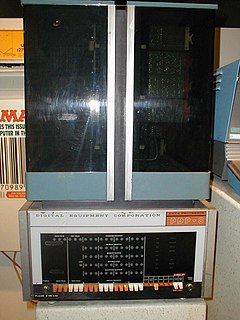
A minicomputer, or colloquially mini, is a class of smaller general purpose computers that developed in the mid-1960s and sold for much less than mainframe and mid-size computers from IBM and its direct competitors. In a 1970 survey, The New York Times suggested a consensus definition of a minicomputer as a machine costing less than US$25,000, with an input-output device such as a teleprinter and at least four thousand words of memory, that is capable of running programs in a higher level language, such as Fortran or BASIC.
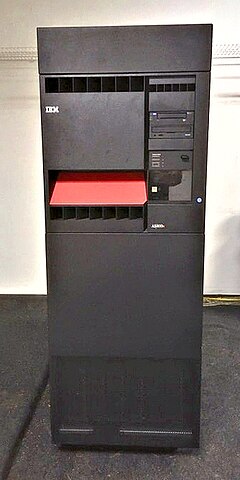
The IBM AS/400 is a family of midrange computers from IBM announced in June 1988 and released in August 1988. It was the successor to the System/36 and System/38 platforms, and ran the OS/400 operating system. Lower-cost but more powerful than its predecessors, the AS/400 was extremely successful at launch, with an estimated 111,000 installed by the end of 1990 and annual revenue reaching $14 billion that year, increasing to 250,000 systems by 1994, and about 500,000 shipped by 1997.
This article presents a timeline of events in the history of computer operating systems from 1951 to the current day. For a narrative explaining the overall developments, see the History of operating systems.
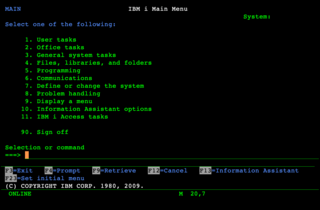
IBM i is an operating system developed by IBM for IBM Power Systems. It was originally released in 1988 as OS/400, as the sole operating system of the IBM AS/400 line of systems. It was renamed to i5/OS in 2004, before being renamed a second time to IBM i in 2008. It is an evolution of the System/38 CPF operating system, with compatibility layers for System/36 SSP and AIX applications. It inherits a number of distinctive features from the System/38 platform, including the Machine Interface, the implementation of object-based addressing on top of a single-level store, and the tight integration of a relational database into the operating system.

The IBM System/34 was an IBM midrange computer introduced in 1977. It was withdrawn from marketing in February 1985. It was a multi-user, multi-tasking successor to the single-user System/32. It included two processors, one based on the System/32 and the second based on the System/3. Like the System/32 and the System/3, the System/34 was primarily programmed in the RPG II language.

The IBM System/36 was a midrange computer marketed by IBM from 1983 to 2000 - a multi-user, multi-tasking successor to the System/34.
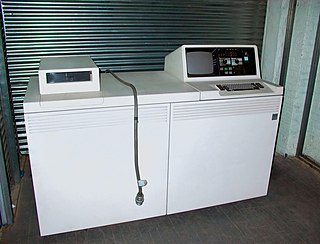
The System/38 is a discontinued minicomputer and midrange computer manufactured and sold by IBM. The system was announced in 1978. The System/38 has 48-bit addressing, which was unique for the time, and a novel integrated database system. It was oriented toward a multi-user system environment. At the time, the typical system handled from a dozen to several dozen terminals. Although the System/38 failed to displace the systems it was intended to replace, its architecture served as the basis of the much more successful IBM AS/400.
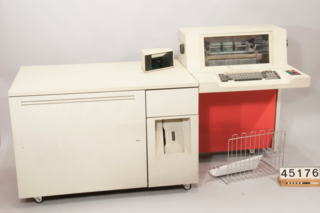
The IBM System/32 introduced in January 1975 was a midrange computer with built-in display screen, disk drives, printer, and database report software. It was used primarily by small to midsize businesses for accounting applications. RPG II was the primary programming language for the machine.
RPG is a high-level programming language for business applications, introduced in 1959 for the IBM 1401. It is most well known as the primary programming language of IBM's midrange computer product line, including the IBM i operating system. RPG has traditionally featured a number of distinctive concepts, such as the program cycle, and the column-oriented syntax. The most recent version is RPG IV, which includes a number of modernization features, including free-form syntax.

The IBM System/3 is an IBM midrange computer introduced in 1969, and marketed until 1985. It was produced by IBM Rochester in Minnesota as a low-end business computer aimed at smaller organizations that still used IBM 1400 series computers or unit record equipment. The first member of what IBM refers to as their "midrange" line, it also introduced the RPG II programming language. It is the first ancestor in the product line whose current version is the IBM i series and includes the highly successful AS/400.
OfficeVision was an IBM proprietary office support application.

System Support Program (SSP) was the operating system of the IBM System/34 and System/36 minicomputers. SSP was a command-based operating system released in 1977.

Midrange computers, or midrange systems, was a class of computer systems which fall in between mainframe computers and microcomputers.
System 3, System/3 or System III could refer to:
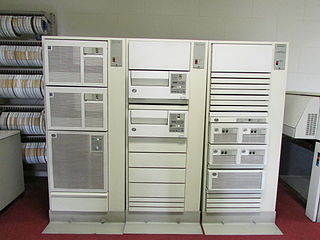
The IBM 9370 systems are "baby mainframe" midrange computers, released 1986 at the very low end of, and compatible with System/370. The media of the day, referring to the VAX systems manufactured by Digital Equipment Corporation (DEC), carried IBM's alleged "VAX Killer" phrase, albeit often skeptically.
Control Program Facility (CPF) was the operating system for the IBM System/38. CPF represented an independendent line of development at IBM Rochester, and was unrelated to the earlier and more widely used System Support Program operating system. CPF evolved into the OS/400 operating system, which was originally known as XPF.
The term IBM platform could refer to any of the hardware and operating systems below.
The IBM 30XX mainframe lines are a group of lines of high-end System/370-compatible mainframes.
References
- ↑ Wright, Jason (February 26, 2006). "The comeback kit". Information Age. Archived from the original on August 8, 2007. Retrieved 2008-01-23.